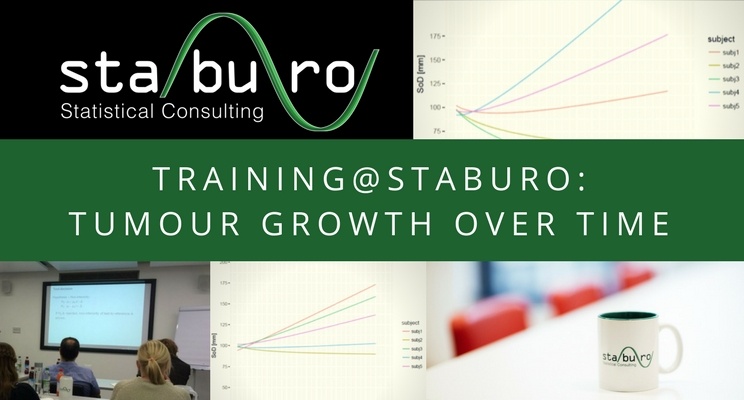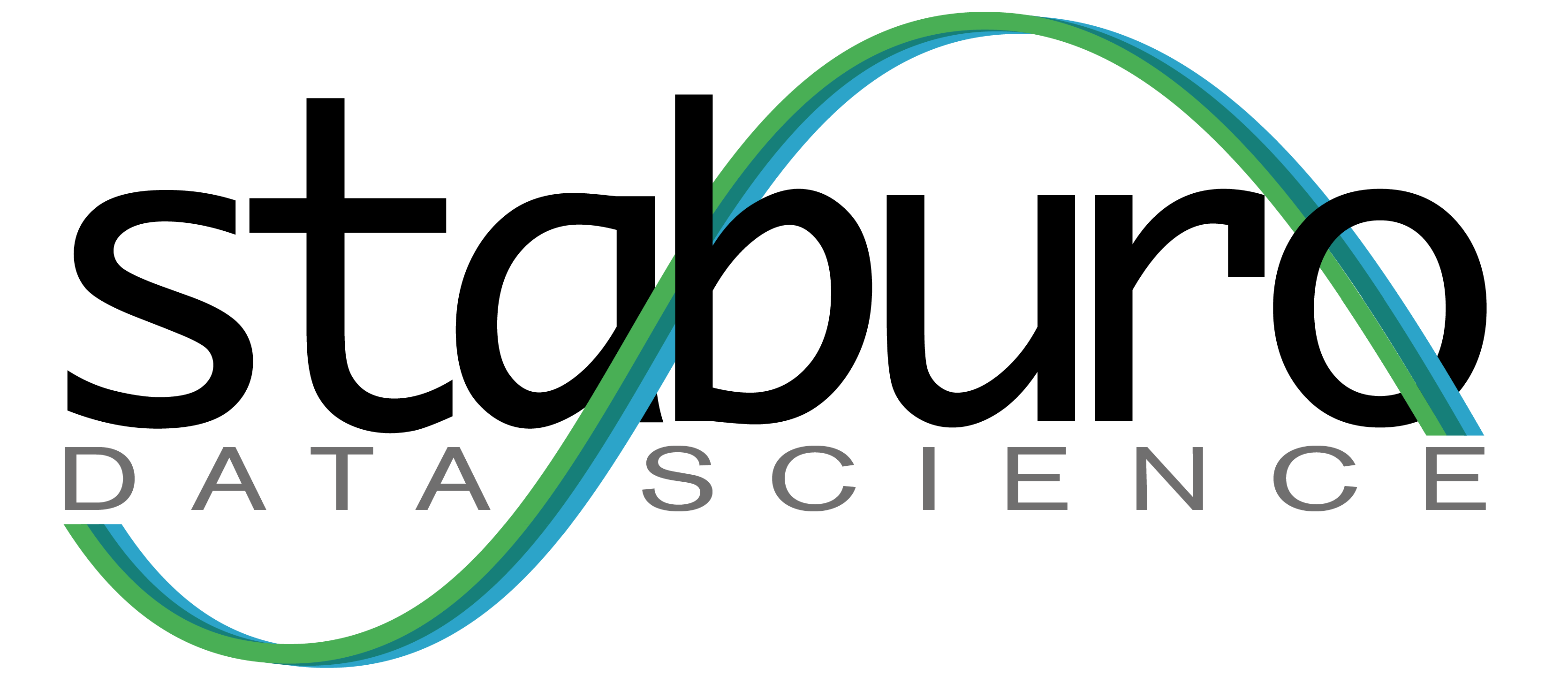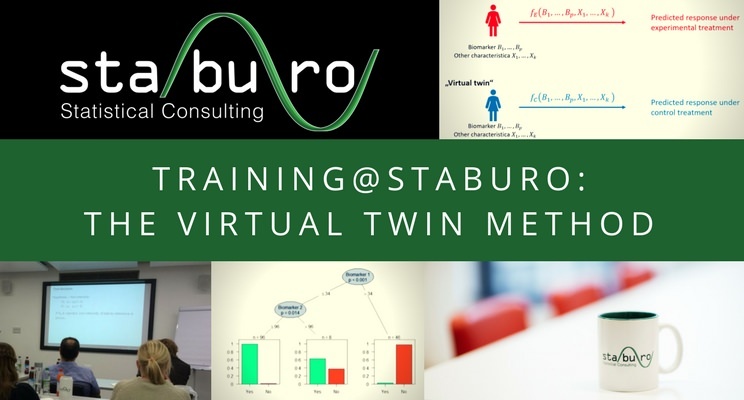
Training@Staburo: Tumour growth over time

Tumour growth over time
Longitudinal Data, Joint Models, and Surrogate Endpoints for Survival Analysis
Tumour burden has been shown to be associated with clinical outcomes in many oncological indications. To explore the impact of treatment on tumour growth over time, all available tumour measurements can be used. Patients with at least two valid tumour images and corresponding sum of diameters of target lesions, measured by RECIST, contribute to the Tumour-growth-Model. Mixed-effects models can be used to quantify the non-linear individual relationships between time from randomization and tumour burden. The model needs to be flexible, allowing for a wide range of different shaped growth curves (u-shaped, j‑shaped, n-shaped, linear-shaped). Finding the optimal parameterisation via AIC and visual inspection of all individual fits, is time consuming but crucial. Such a Tumour-Growth-Model can be used to
- better understand the mode of action and investigate other factors influencing tumour growth
- investigate the influence of tumour kinetics on survival
- develop new (additional) surrogate endpoints for overall survival to improve future phase II go/no-go decisions
- improve future early PFS estimation in the same indication and line.
If you are interested in this topic, feel free to contact us anytime!


Recent Comments